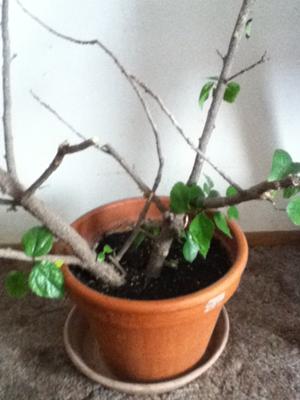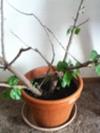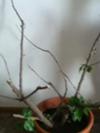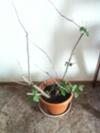by Shannon Hartley
(Milw, Wi)




Can you please tell me what kind of plant this is and how I can take better care of it?
Drought Smart Plants reply: Hi Shannon, this poor thing looks like it’s possibly on deaths door, unfortunately.
I can’t tell what it is, although judging from the pleated leaves it could be some kind of Hibiscus.
These tend towards this type of issue, with a lot of die-back on older wood, if they don’t get enough light during the winter. As a tropical forest plant, these prefer to have dappled shade in hot climates, but in northern areas where the daylight is really short during the winter, they can really suffer.
One small detail that is hard to wrap your head around is that near the equator, the daylight is always around 12 hours, with equal night time hours. This means that these types of plants have adapted to that schedule.
Here’s my suggestion: cut back all the old growth. This won’t grow any more, and in fact might hinder the recovery of the rest of the plant.
Take the old branches right off, down to where the new leaves are. Then, put it outside in your garden, preferably out of full sun in a corner where you can ignore it.
Water it occasionally if the weather is hot, otherwise, don’t look at it, just leave it be.
Sometimes plants will make it, but fiddling with them seems to push them over the edge into complete failure to thrive.
Whatever you do, don’t fertilize it!
In the fall, or when the nights are getting cooler, re-evaluate it. If the new growth seems strong (ie: the new stems are a couple of inches long, and no more die back has occurred) take it back inside for the winter.
Provide a grow light of some sort on a 12 hour cycle through the winter. Don’t depend on winter sunlight to keep it healthy, as it’s obviously not regimented enough.
If it survives, it will come back better than ever.
Best of luck,
Jacki


